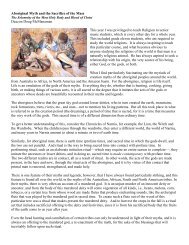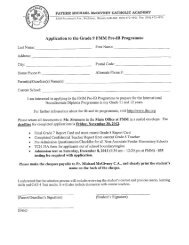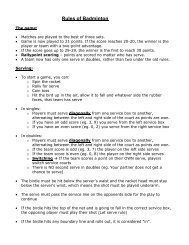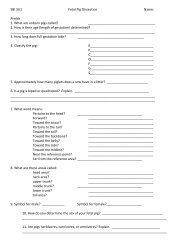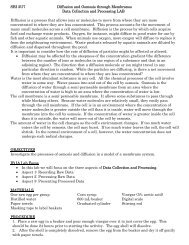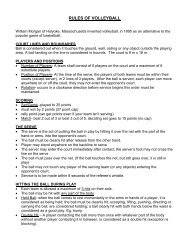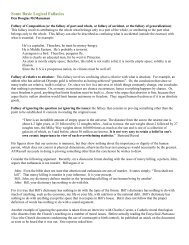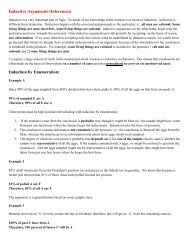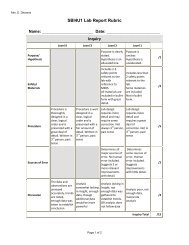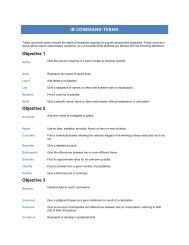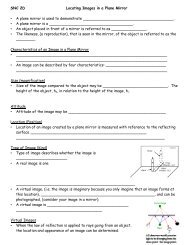Syllabus - Father Michael McGivney Catholic Academy
Syllabus - Father Michael McGivney Catholic Academy
Syllabus - Father Michael McGivney Catholic Academy
- No tags were found...
You also want an ePaper? Increase the reach of your titles
YUMPU automatically turns print PDFs into web optimized ePapers that Google loves.
3.2 Thermal properties of matter 5 hoursAssessment statementObj NotesSpecific heat capacity, phase changes and latent heat3.2.1 Define specific heat capacity and thermal 1capacity.3.2.2 Solve problems involving specific heat 3capacities and thermal capacities.3.2.3 Explain the physical differences between 3 Only a simple model is required.the solid, liquid and gaseous phases interms of molecular structure and particlemotion.3.2.4 Describe and explain the process of phasechanges in terms of molecular behaviour.3 Students should be familiar with the terms melting,freezing, evaporating, boiling and condensing, andshould be able to describe each in terms of thechanges in molecular potential and random kineticenergies of molecules.3.2.5 Explain in terms of molecular behaviour 3why temperature does not change during aphase change.3.2.6 Distinguish between evaporation and 2boiling.3.2.7 Define specific latent heat. 13.2.8 Solve problems involving specific latent 3 Problems may include specific heat calculations.heats.Kinetic model of an ideal gasAim 7: There are many computer simulations of the behaviour of gases.TOK: The use of modelling in science may be introduced here.3.2.9 Define pressure. 13.2.10 State the assumptions of the kinetic model 1of an ideal gas.3.2.11 State that temperature is a measure of the 1average random kinetic energy of themolecules of an ideal gas.3.2.12 Explain the macroscopic behaviour of anideal gas in terms of a molecular model.Topic 4: Oscillations and waves (10 hours)3 Only qualitative explanations are required.Students should, for example, be able to explainhow a change in volume results in a change in thefrequency of particle collisions with the containerand how this relates to a change in pressureand/or temperature.4.1 Kinematics of simple harmonic motion (SHM) 2 hoursAim 7: Many computer simulations of SHM are available.Assessment statementObj Notes4.1.1 Describe examples of oscillations. 24.1.2 Define the terms displacement, amplitude,frequency, period and phase difference.1 The connection between frequency and periodshould be known.4.1.3 Define simple harmonic motion (SHM)and state the defining equation as.1 Students are expected to understand thesignificance of the negative sign in the equationand to recall the connection between ω and T.



